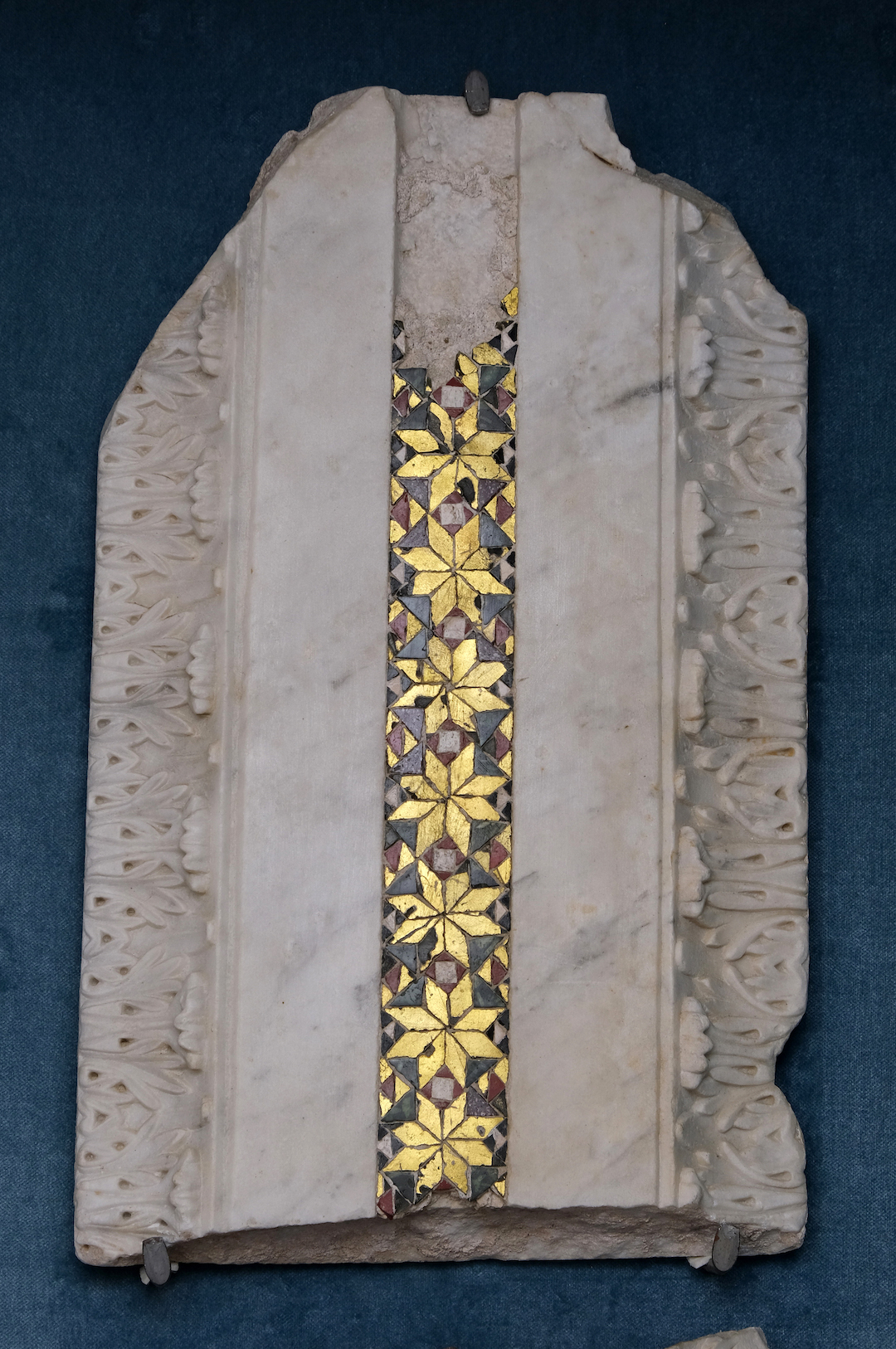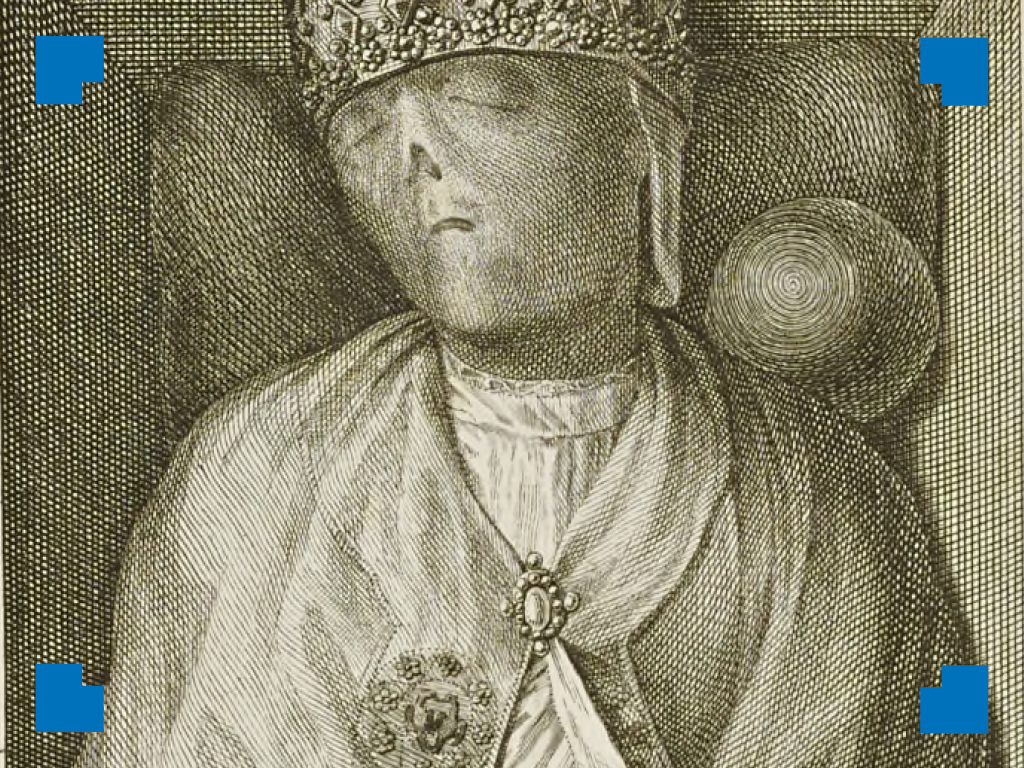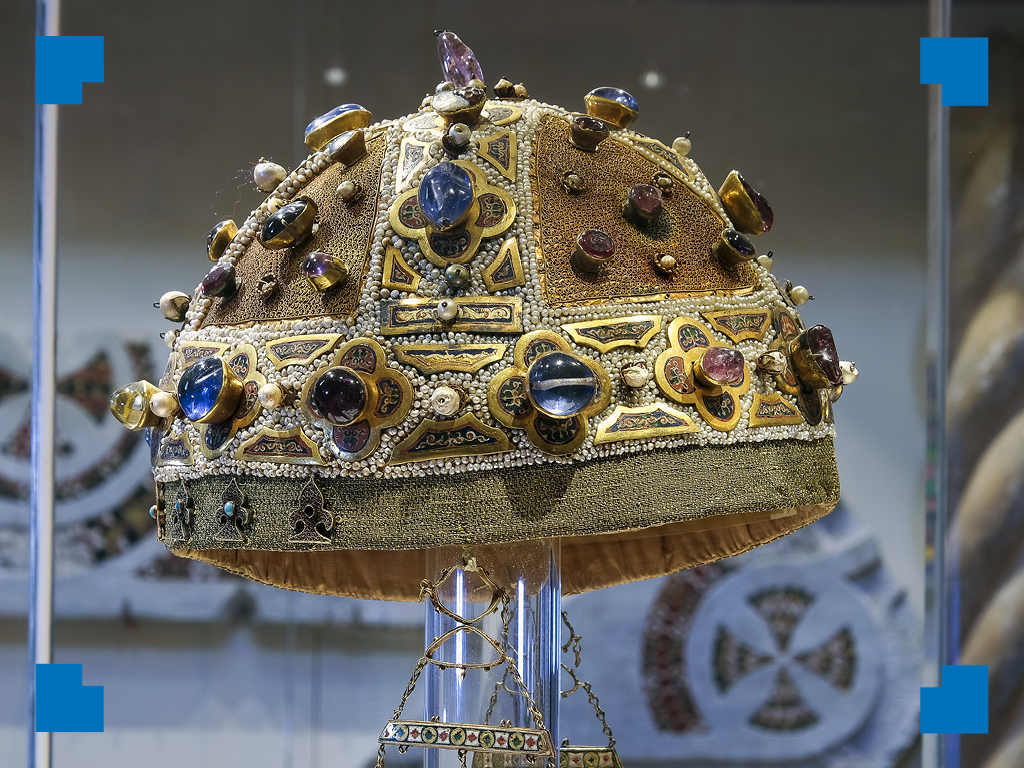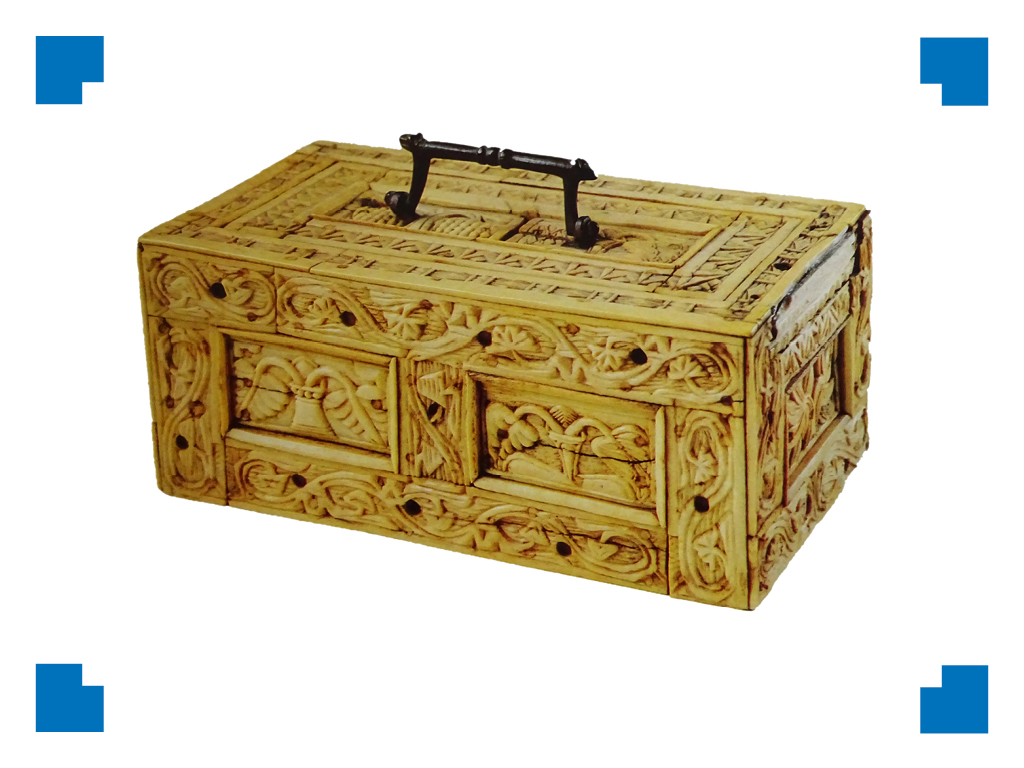
16. Fragment of the screen between the presbytery and the nave and aisles
Sicilian craftsmen (?), second half of 12th c.
Fragment of the screen between the presbytery and the nave and aisles
white marble with decorative polychrome mosaic inserts (60×37 cm)
Monreale, Diocesan Museum, from the Cathedral
The Benedictine complex of Santa Maria la Nuova in Monreale, founded in the second half of the 12th century by King William II of Hauteville (nephew of Queen and Empress Constance) – including with the church, the cloister and the rooms reserved for the daily life of the monks – represents the most mature but also the final phase of the so-called “Arab-Norman” art.
The Swabian dynasty that will succeed will be rather remembered for a leaner and more rational civil and military architectural style.
Inside the basilica, promoted to Metropolitan Cathedral, the space reserved for the monks was separated from the aisles and nave by a high screen. It was composed of a white marble frame carved with plant motifs and embellished with polychrome and gold mosaic. Inside the white marble structure were large slabs of precious porphyry.
Pulled down by order of the Spanish Archbishop Luis Alfonso de los Cameros (1658), its elements were partly reused or lost, and partly preserved in rooms near the church.
The 1811 ravaging fire that damaged the basilica and its monuments (cat. 15), leading to revival restoration works, increased the number of fragments that were no longer relocated, including the one here on display.


